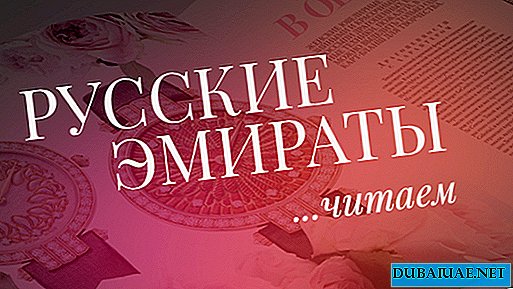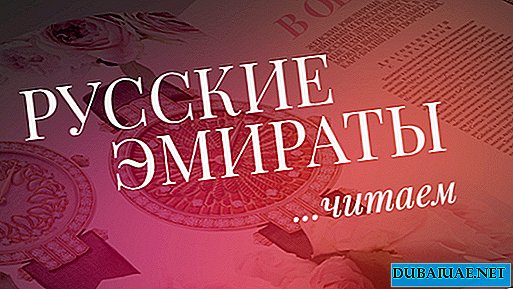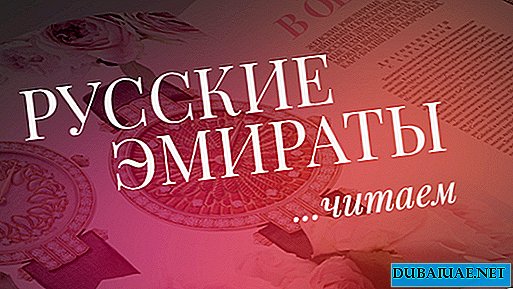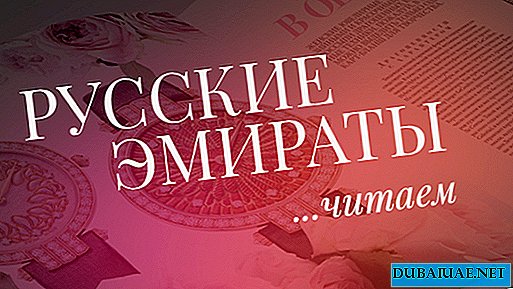 Konstantin Pilyugin, collector
Konstantin Pilyugin, collector
Konstantin Pilyugin - Collector from Ryazan. He has been doing research and research for many years, but his find has become a real sensation, which the leading museums of the world could have recognized. THE SPEECH IS ON A UNIQUE PEARL WEIGHT OF 650 GRAMS. WITH HER CONSTANTINE ARRIVED AT THE INTERNATIONAL PEARL FORUM IN THE CAPITAL OF THE UAE. HERE WE MEET WITH HIM AND TALKED ABOUT HIMSELF ALL ITS LIFE AND ABOUT AN INFLUENCING FIND IN WHICH THE PEARL WAS NOT RECOGNIZED IMMEDIATELY ...
Konstantin, how and when did you decide to start collecting? Probably how all the brands were collected in childhood, or with something more serious started?
It was necessary to come to this. I have been actively collecting for almost ten years. These are expeditions and various research works. It all started with battle axes. This is the story of our land and how our state was formed. This is a story about how much effort our ancestors had to make so that we live in this country. And where the state is formed, there is war, and where military operations are taking place, there are battle axes. Today I have gathered about 30 of them. Military weapons, which took part in the formation of our state, have a different geography. This is Slavic, and Scythian, and Finno-Ugric, and Roman weapons, and the one used by the Sarmatians. In general, I really like antiquities, I'm interested in the ancient period. Needless to say, my hobby at some point shifted to a different quality. It `s naturally. After all, when you begin to deeply explore the issues of the formation of statehood and wars of conquest, the trace of weapons will certainly lead to jewelry.
Let me clarify if you are a historian or archaeologist by training?
No, I was engaged in self-education. At first I was just curious, then, until a certain material base was formed, I had to do collecting for the sake of earning. This is a normal situation. Then it became easier, because it is easy to be a collector when there is a solid material base, since a hobby is not cheap. At first it was difficult when you have to earn money, feed a family and develop your hobby at the same time, going on regular trips and expeditions, in which there are certain risks associated with our country, well, you understand ...
Probably no harder than contacting professional archaeologists to find out from them what era a particular find belongs to? Is that risky too?
I completely agree with you. But with archaeologists in our country a slightly different situation. I can tell you one case in point. On the Ozh River, where Dmitry Donskoy placed Khan Girey in a categorically uncomfortable position in front of the Kulikovo field, there is the village of Glebovo Gorodishche. According to the chronicles, there was such a serious battle that the river overflowed from the number of corpses that got into it. The exact place of the battle has not been established, however, festivities, holidays and so on are being held near this village today. So, on this river, carrying out some work, local peasants at a depth of 4 meters found a rusty iron stick. They tried to break it, it did not work out, because the piece of iron bent into a ring and then straightened. One of the men regretted the find and did not throw it away, left it in his household. He tore off the rust from it, tore a piece of wood literally from the fence and stuck it to a piece of iron. He began to cut pigs. Later it turned out that this saber belongs to the 15th century, it is made of the highest quality Damascus steel, which has not lost its properties, having lain for several centuries under water.
Yes, they knew how to do it!
It's true. And by the way, wrought iron deserves a separate discussion. I have a collection of wrought iron nails from different eras, dating back to the 8th century. These are absolutely unique products. And the skill of casting and forging in Russia was amazing. If you return to that saber, I somehow ended up on one of the trips to Glebovoye Gorodishche. In the bath, a conversation began about this saber, and when it turned out what I was doing, this man gave it to me. I began to find out what kind of blade. As a result, he came to our museum, found the weapons department, and serious women sat there, scientists, to whom I showed a saber. They pulled out to me about ten huge books so that I myself would look in them for information about the subject of interest to me. My saber turned out to be from Arabia, a descendant of the samsir saber, which, in turn, gave a whole direction to melee weapons - these are Polish caravel blades, and our Caucasian bebutes, and so on. As a result, today this saber is in my collection, and even I did not remove a piece of wood from it. As they gave it to me, it hangs. Once I even tried it. I'll tell you honestly, this is a terrible weapon.
By the way, during the war in the Caucasus in the 19th century, bebuta sabers were recognized as the best cold steel of the century, they armed infantry rangers who went in bayonet attacks. In general, this is a serious weapon that requires respect, and graduates and archaeologists have not helped me find out about it. I got to the bottom of everything myself.
Before turning to a conversation about your rare pearl, please answer which of your collections do you still respect with great respect - weapons or jewelry? As a man, I love weapons. But I love minerals even more. Where there is war, there is peace. These are two parts of one whole, only from different sides. Minerals and gemstones appeared in my life also by chance. During the expeditions and my research work, I began to find things that the rest simply did not notice. One of the first finds was Sinai turquoise, but we need to have a separate discussion about this mineral. And then a fossil pearl weighing 650 grams “came” to me, which I initially mistook for a dinosaur egg. Much later, after a series of studies, it turned out to be pearls. Thus, I ended up here in the UAE, where I came at the invitation of the Glory Art art gallery to participate in a specialized Pearl Forum in Abu Dhabi.
Please tell me, but in Russia there are still researchers and collectors like you? Do you somehow communicate with each other or does everyone keep apart?
I met with the best experts in Russia that I could find. I think that it is difficult for serious collectors in our country to find support. And there are not so many specialists in gemology. Probably, the mentality of our citizens, who are accustomed to considering collecting as a matter almost criminally punishable, does not allow them to meet such researchers as myself. After all, it is enough to open the Criminal Code to understand that it does not spell out such a thing as unconditional ownership. I personally had to study the Criminal Code at the dissertation level in order to understand how to turn some things into property. Therefore, I, in fact, set a precedent, having gone through the whole circle of legitimizing my findings.
What are you most proud of in your collection of minerals?
Since I flew here to the Pearl Forum, it will be natural to say that, of course, a pearl. This is a unique natural formation that goes beyond our understanding. I saw people stretching their faces when I showed them my unique pearl, which I also represented in the capital of the Emirate. In my understanding, people should see and get acquainted with minerals. Stones should live, and not be hidden in storage. This is one of the properties of gemstones and pearls.
They say that pearls are alive and, over the years, crumble into dust? As the owner of an ancient pearl, tell me, is it possible to somehow save the pearls from destruction?
 The fact is that, as practice shows, pearls are stored in Russian museums for 500-600 years, but it also stratifies, crumbles, and turns black over time. Irreversible changes visible to the eye occur in it. My pearl is not just old, it is ancient, even mega-ancient. Her age is somewhere around 290-390 million years. She was allowed to maintain a depth of occurrence, which was almost 100 meters underground. I consider it a miracle that this pearl has been preserved, and after serious adventures it ended up in my hands.
The fact is that, as practice shows, pearls are stored in Russian museums for 500-600 years, but it also stratifies, crumbles, and turns black over time. Irreversible changes visible to the eye occur in it. My pearl is not just old, it is ancient, even mega-ancient. Her age is somewhere around 290-390 million years. She was allowed to maintain a depth of occurrence, which was almost 100 meters underground. I consider it a miracle that this pearl has been preserved, and after serious adventures it ended up in my hands.
And how are you going to save it?
For this, there are certain technical conditions that I will try to comply with. So far I am doing my best to create these ideal conditions.
Have you ever had the idea of opening your own museum, where in appropriate conditions you could exhibit your collections?
I dealt with this issue. While he is at the stage of negotiations and all kinds of approvals. It only took me several years to obtain permits. But this is also an experience. There are things that need to be done, and no one will do this for us. I just want people who are desperate to do something and tired of bureaucratic obstacles, with examples like mine, able to find a second wind, not give up and bring everything to the end. Today we need values that we ourselves must create, people of our generation. Everything that we have in our country today and exhibited in museum collections and galleries was done by those who lived before us. The question is what have we done? So far, unfortunately, we are ruining, not replenishing. I came across this, because sometimes I am invited as an expert by those bodies that are obliged to preserve and prevent the export of national property from the country. Believe me, the scale of this plunder is monstrous. Maybe I didn’t always want to do this, but if you consider yourself an integral person and a decent person, you need to fulfill what is imposed on you by fate and not be afraid to tell the thief and the fraudster who he is.
What are you interested in the Pearl Forum in Abu Dhabi?
Firstly, I’m interested in people who are doing their job. Secondly, it was important for me to expand my knowledge base and get to know other experts, because once upon a time I was told that there are no pearl specialists in Russia. I had to become one. And today I am calmly talking with people with academic knowledge in this area. Indeed, in Russia there are pearls only in the north, and I read all the literature devoted to this stone, and I can even quote individual chapters. I like to engage in minerals, and here I met the same people interested in gemology. Weapons led me to precious stones, stones to understanding the interconnections between the history of Russia and the Arab world, pearls to a pearl forum ...
So what is next?
And then I have a few more minerals in my work, the fate of which is associated with many famous world figures, and which I would love to talk about with you and your readers another time. Therefore, we put the ellipsis ...
Good. Thank you for this conversation, Konstantin. I hope to see you again in the Emirates.











